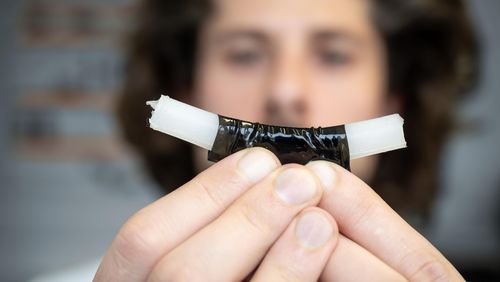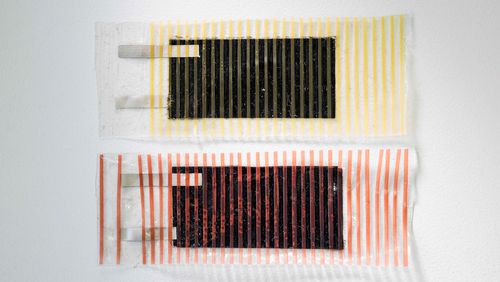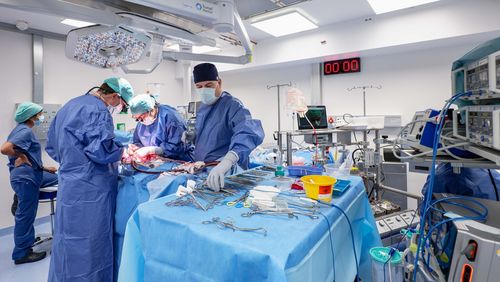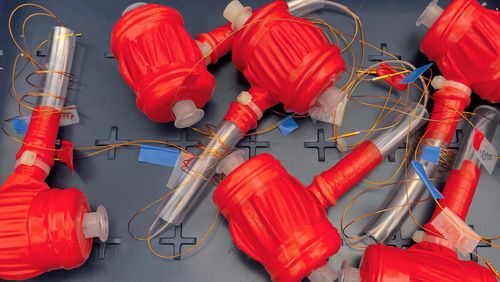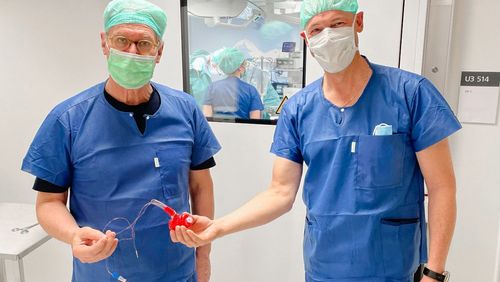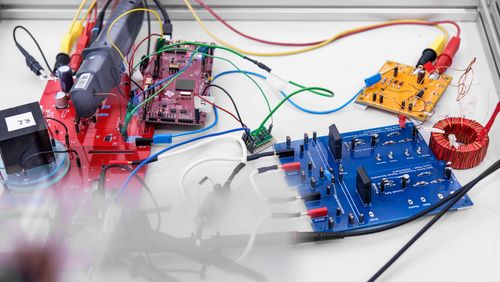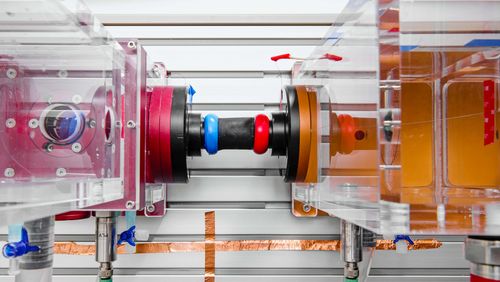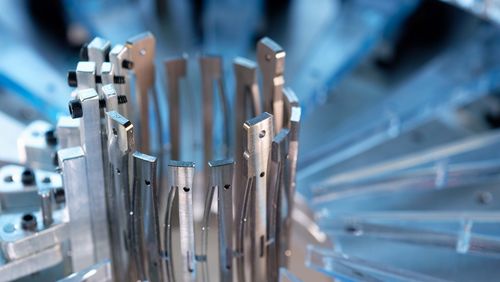“It would be a breakthrough in cardiac medicine”
Renowned Swiss heart surgeon Thierry Carrel plans to test the artificial muscle at some time in the future. He believes it’s possible that the ring around the aorta will even help the hearts in patients with minor cardiac insufficiency to recover.
Thierry Carrel, you will be testing the artificial muscle for patients with cardiac insufficiency in clinical trials. What made you decide to be part of the project?
Thierry Carrel: Fitting a kind of muscular ring around the aorta is a very creative idea. The researchers in Yves Perriard’s team think entirely outside of the box, which is something I admire. I believe the ring would bring about a major breakthrough in cardiology—a factor that is all the more important in light of the increasing number of patients with heart failure, a result of our higher life expectancy. And this number will only continue to grow. Overall, the artificial muscle would be a valuable addition to the various existing treatments for cardiac insufficiency.
What kind of treatments are offered today?
Patients with cardiac insufficiency are generally given medication. If the heart grows too weak, a variety of cardiac support systems are available, for instance pumps to replace the left ventricle or, in exceptional cases, both ventricles. As a last resort, there’s also a heart transplant. But these treatments have serious disadvantages. Medications have side effects and mainly help in cases of minor cardiac insufficiency, while ventricular pumps and transplantations require major surgical interventions that aren’t without risk, especially for older patients. And as we all know: there’s a shortage of donor hearts.
Which patients would benefit most from the new artificial muscle?
The aorta ring would offer an additional way to support—rather than replace—heart function. The ring would benefit patients who currently take medication as well as some patients who rely on a ventricular pump. I believe the artificial muscle is especially promising for patients whose hearts aren’t yet seriously weakened. When a weak heart is supported at an early stage, a full recovery is possible in the best case—and the ring could be removed again after a while. This could delay cardiac insufficiency until an even later life stage. The decisive question for clinical application will be how much pumping capacity the artificial muscle can generate.
What are your hopes?
It would already be very good if the artificial muscle could muster a third to half of the heart’s pumping capacity—so that we could compensate by the same amount.
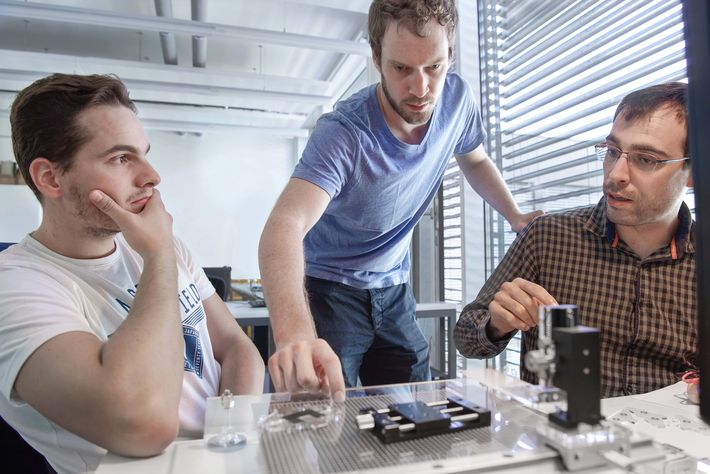
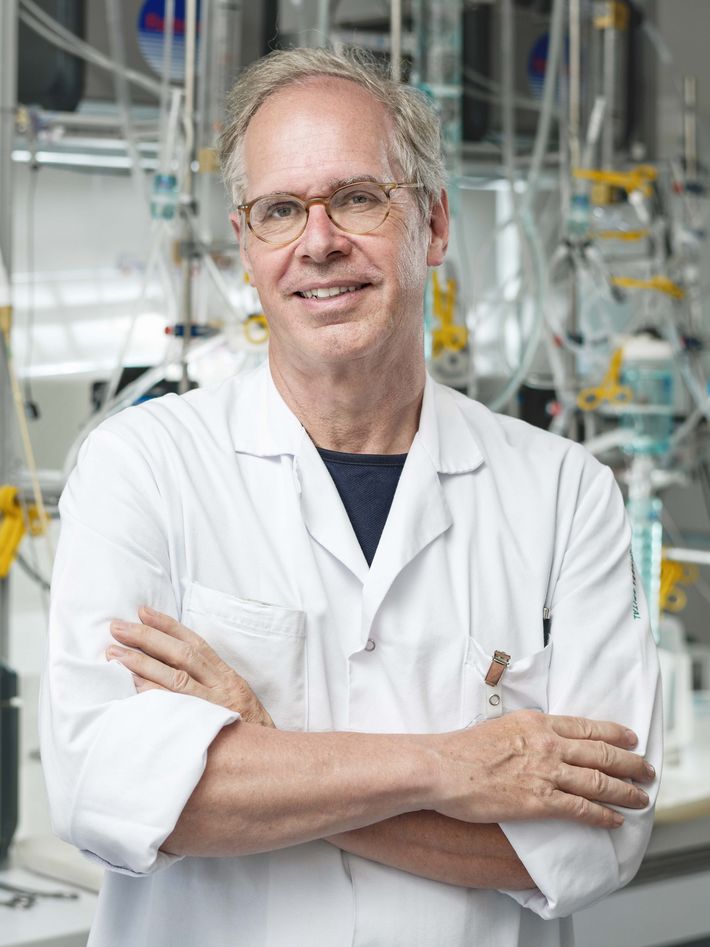
What would an operation to place the ring around the aorta entail?
It’s not yet possible to say exactly how it will work because quite a bit depends on whether the electric supply for the muscular ring will be inside or outside the body. The actual procedure to fit the aorta ring won’t require highly complex surgery—contrary to conventional heart operations. The aorta is located right behind the sternum, meaning it would probably be enough to open just a third to half of the sternum. The membrane and titanium spring would be fitted around the aorta and then sealed as a ring. If necessary, more than one ring could be placed to achieve the necessary pumping capacity.
What advantages would the new method have?
One major advantage is that the artificial muscle won’t be part of the circulatory system. This greatly reduces biocompatibility requirements and overall risk compared to today’s ventricular pumps. Think thromboses and infections. The intervention with the aorta ring would also do away with the need for patients to take anticoagulants. These are all reasons why the artificial muscle would be welcome as a gentle, minimally invasive treatment.
The researchers also plan to use the polymer membrane as a sphincter for the urinary bladder and as a small muscle in the face—in stroke patients, for example, who have lost control of their facial muscles. Is it feasible that the artificial muscles could alleviate other health problems?
I wouldn’t rule anything out. Here, too, the decisive factor will be how much power the artificial muscle can generate. It’s possible that, in future, artificial muscles will be able to help patients with degenerative muscle disease (myopathy) or lateral paralysis retain their independence longer. After Yves Perriard and his team publish their initial findings on their research and the current state of development, I can well imagine that they’ll receive calls from specialists in other medical fields. And then it’s possible that applications will be suggested that we can’t yet imagine.
On the whole, how optimistic are you?
In the past few decades, the world of medicine has seen advances in diagnostics and therapies that I never would have dreamt of—for example new systems of artificial heart valves. We have no idea what the medical field will look like in 20 years. Big data, stem cells, chips and sensors. Who knows, maybe there won’t be much use for us doctors anymore ... But one thing is certain: the researchers at the Center for Artificial Muscles are extraordinarily innovative thinkers. It’s wonderful that this pioneering spirit exists outside of Silicon Valley.
Interview: Adrian Ritter
Photos: Felix Wey

